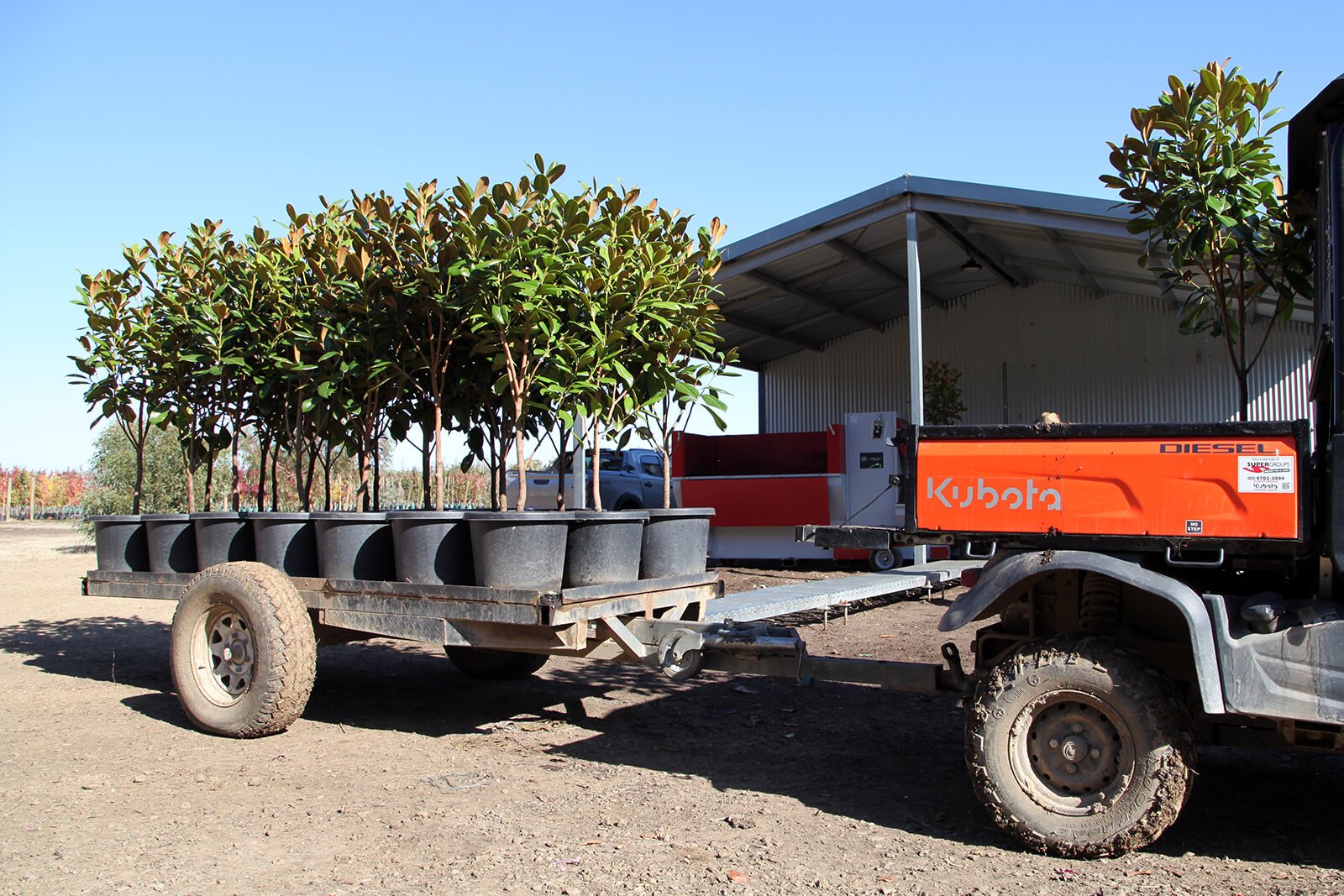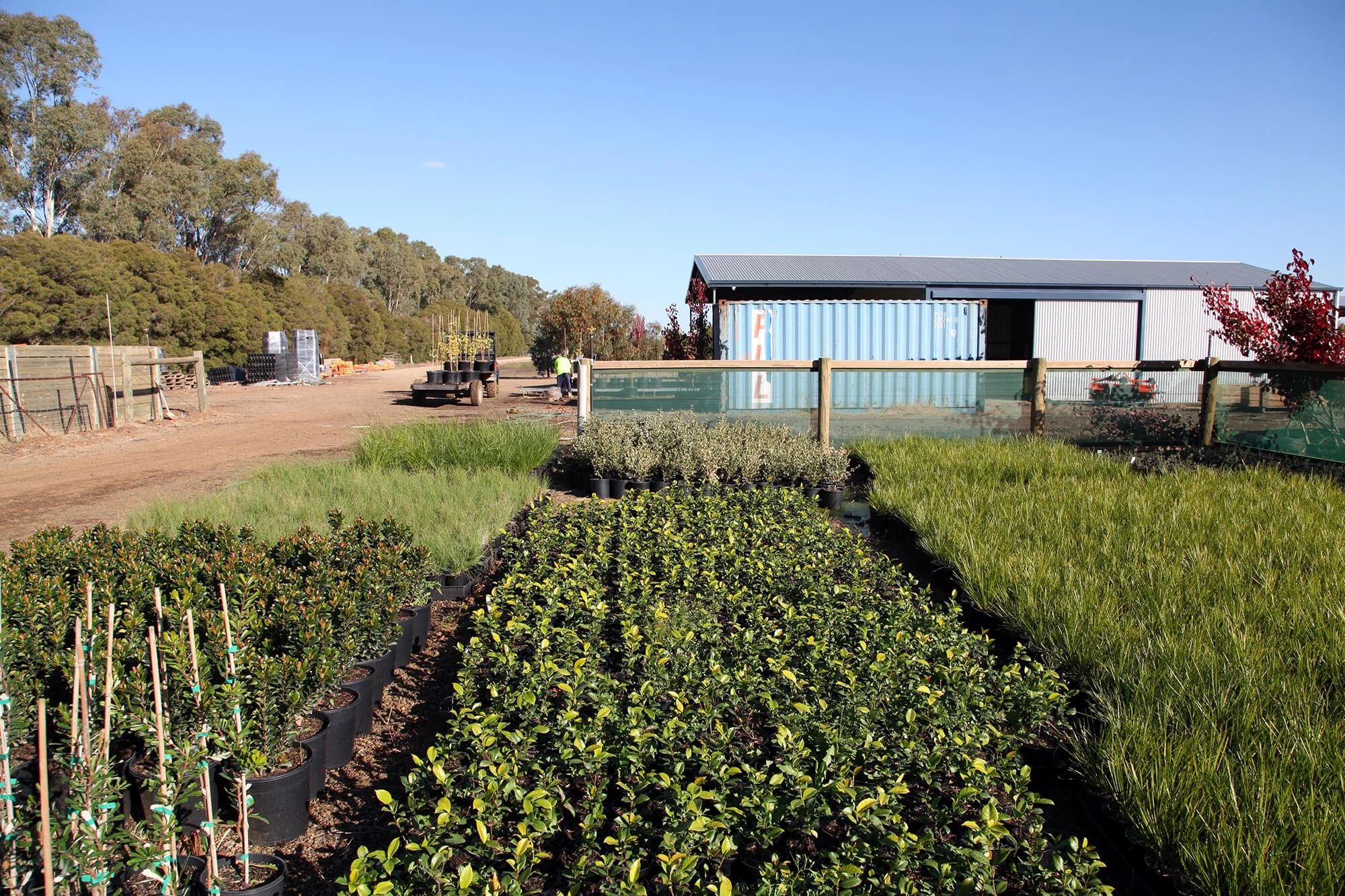How to plan your tree supply for commercial and residential development sites.
A practical guide for landscapers and plant buyers.
Planting hundreds, or even thousands, of trees? Choosing a wholesale tree nursery can feel overwhelming, especially when your deadlines are tight and your specs are non-negotiable.
The last thing you need is low-quality stock and missed deliveries. The good news? With the right approach and a bit of planning, you can set your project up for success.
This guide shares practical insights to help you find a commercial nursery that fits your needs. It will help you build the kind of supplier relationship that makes life easier from start to finish.
Start with a clear brief
Before reaching out to suppliers, take a moment to define what you need. Are you looking for tube stock, advanced trees, drought-tolerant natives, or a mix? What’s your timeline? Do you have delivery access constraints?
Here’s what to consider:
Site and soil conditions. Assess drainage, sun exposure, soil type and irrigation access. These influence what will thrive long-term.
Climate suitability. Match species to environmental factors like frost risk, temperature swings and rainfall patterns.
Preferred species or substitutes. Know what you want, but be open to advice — most nurseries will help you choose alternatives if needed.
Seasonal delivery. Timing is everything. Planting windows shift with the seasons, so planning around availability helps keep your project moving.
Planning ahead with your nursery partner.
Once you’ve clarified your needs, it’s time to evaluate potential suppliers. Here’s what to look for:
What to Look for in High-Quality Stock.
As an experienced trade buyer, you know the signs of healthy, resilient trees: balanced branching, straight central leaders, well-formed roots. Bonus points for nurseries that grow to AS2303 — the Australian Standard for landscape trees.
A nursery with a diverse range of stock — from drought-hardy natives to advanced exotics — offers more flexibility across different project types. Diversity also supports healthier planting outcomes by improving biodiversity and soil health.
Understanding Stock Availability and Timelines
A responsive nursery will be upfront about what’s in stock now what’s maturing soon, and what’s being contract grown. Regularly updated stocklists, transparent lead times and clear specs help you plan.
Why does this matter? Because it gives you confidence. You can check availability in real-time, track what’s maturing, and avoid chasing spreadsheets or waiting for someone to get back to you.
Reliable suppliers confirm availability quickly, suggest viable alternatives, and communicate changes before they become urgent problems.
Matching Nursery Capacity to Your Project Needs.
Can the nursery manage your required volume? Do they deliver statewide? Can they handle large orders without compromising timing or quality?
It’s worth checking delivery systems and track records. Consistent stock, clear logistics and flexibility make all the difference — especially on time-sensitive builds.
Delivery and logistics.
Smooth delivery matters as much as quality stock. Look for a nursery that can coordinate freight in line with your planting window, and has the right equipment to safely transport and unload large quantities.
Bonus points for those who treat plant handling with care — not just speed. It’s a good sign of reliability and pride in what they grow.
Service and Communication.
Responsive, knowledgeable suppliers save you time and stress. Look for a nursery that returns your calls, keeps you informed, and knows your project details.
More than that, a good nursery will offer proactive advice on substitutions, specs, timing, and work with you to hit your goals.
Tree supply isn’t a quick transaction; a good service builds lasting partnerships.
What to clarify up front.
Not all nurseries are set up for the scale of commercial supply. Finding that out too late can lead to costly delays, substitutions, and missed planting windows.
Avoid surprises by clarifying a few key things early:
Do they grow to AS2303 standards?
This ensures trees are structurally sound, well-formed, and ready for long-term performance.Are their stocklists up to date and easy to access?
Real-time visibility helps you plan confidently. If you’re chasing spreadsheets or slow replies, that’s a red flag.Do they have systems and experience with trade supply?
Commercial orders demand more than healthy trees — ask about delivery, communication, and their experience managing large or staged projects.Can they share similar project examples or references?
A reputable nursery will be open about the work they’ve supported and who they work with.
Ultimately, how they respond matters as much as what they say. If timelines are vague or communication is slow, they may not be the right fit for your project.
Does location matter?
Yes — especially when planning at scale.
Nurseries based in Northern Victoria have a real advantage. With more sunlight and a longer growing season, they can produce stronger root systems, faster-maturing stock, giving them a natural edge on stock quality, consistency and supply.
Faster growth cycles and strong root systems mean healthier trees and more predictable timelines — especially helpful when sourcing large, staged orders.
A nursery that fits your project.
Every planting job is different. The right nursery for you is the one that understands your specs, timeline and site constraints.
The right partner keeps things moving smoothly, suggests smart solutions when needed, and takes the pressure off you when timelines get tight.
Still got questions? Check out our FAQ page or contact us for an obligation-free chat.



